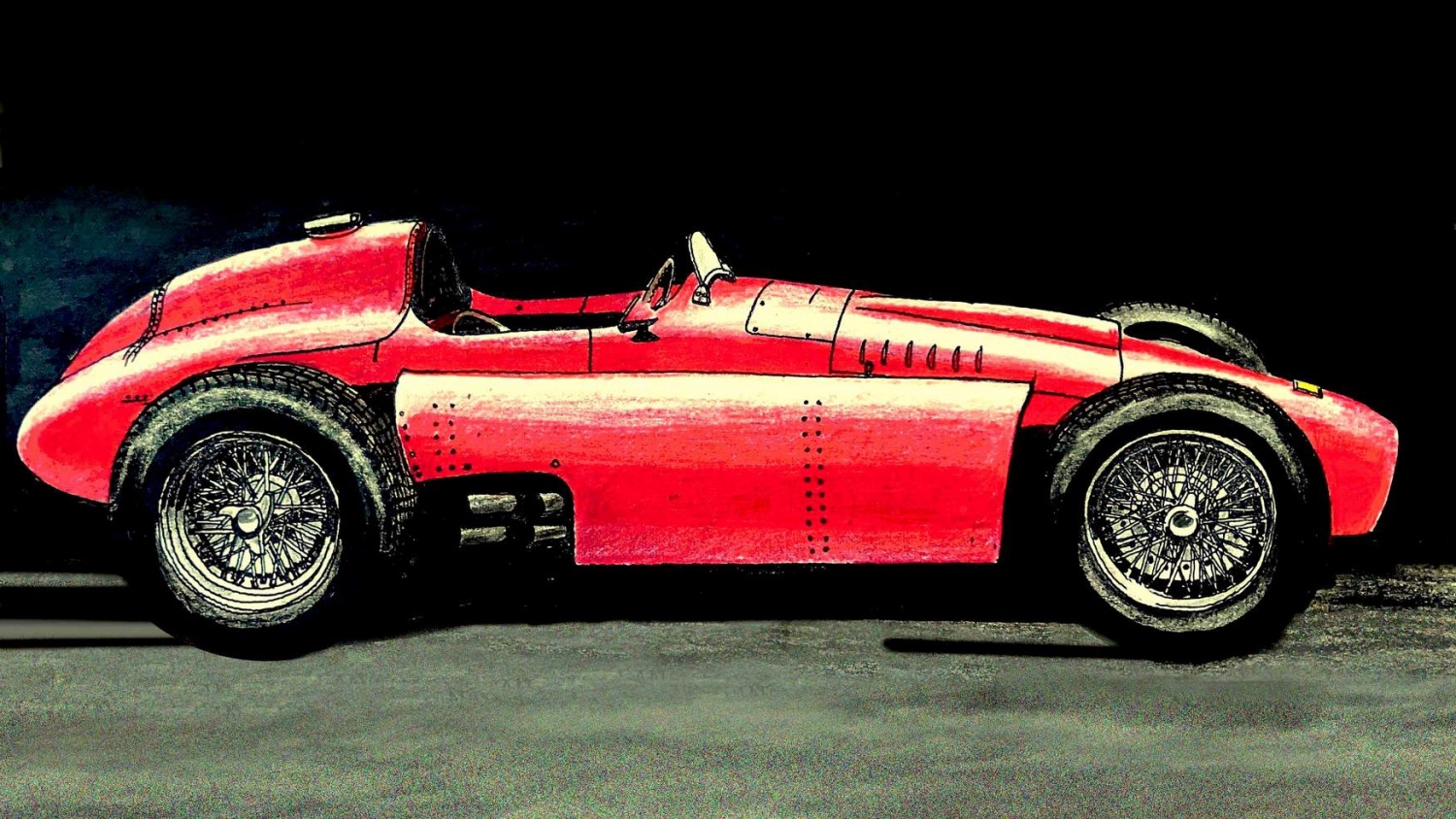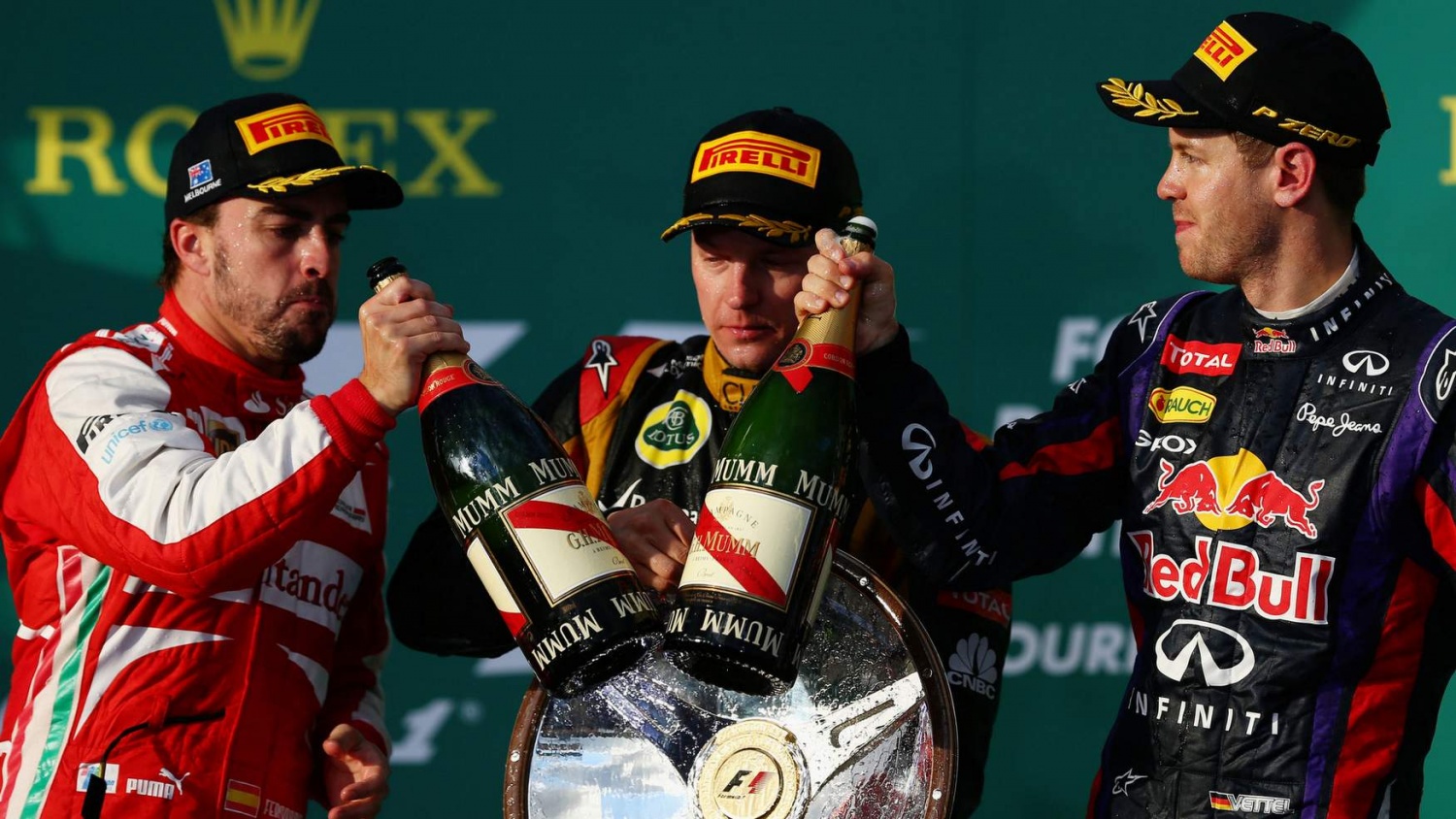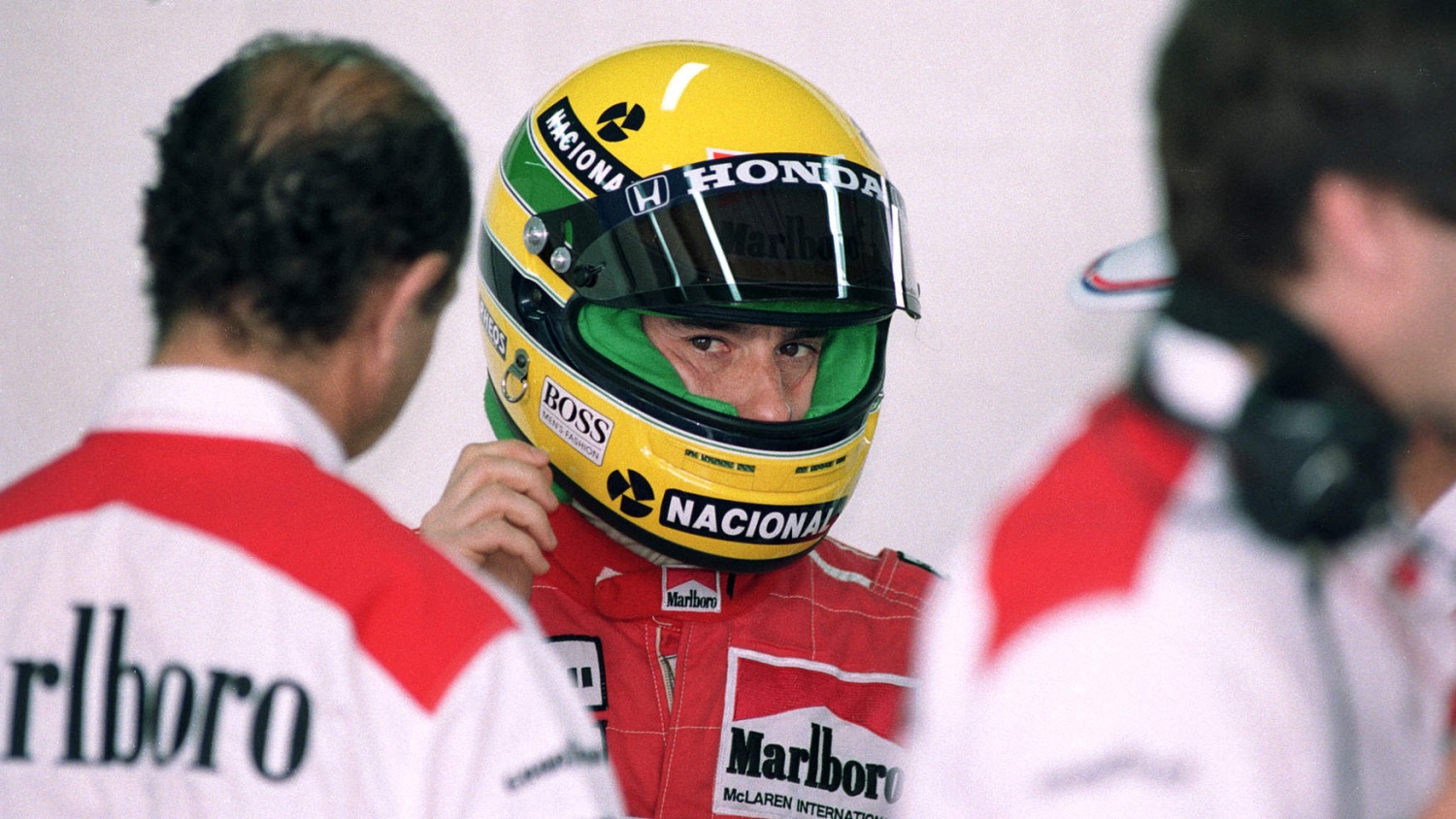
Forgotten Legend: Lancia’s great giveaway
Read More
17 March: Today in Racing
Read More




Ayrton Senna would have been sixty on Saturday. Sadly he was taken so tragically, but his untimely death has made the enigma of Ayrton Senna into a legend larger than life.
Everyone knows the records — the three world titles, the 41 wins, 80 podiums and an incredible 65 pole positions in 161 GP starts set him apart as among the greatest drivers of all time but what was always more incredible to behold, was how Senna went about his passion of racing — how he absolutely selflessly put his entire body, soul and spirit into every aspect of racing and rewrite how it should be done as he did so.
The rain master is master of all
Senna was far more than just a driver, but his incredible ability in a race car built a masterly foundation off which the enigma thrived and if anything ever set Senna out from his race rivals, it was Aytron’s incredible car control. They say that the rain is the great equaliser and that racing in the wet will always sort the driver chaff from the hay. In Senna’s case, his mastery was already evident in his second-ever car racing outing when he dominated that sodden Formula Ford race.
Senna’s wet weather brilliance followed him through his Formula Ford 2000 and Formula 3 careers and into F1, where the best result of his debut season aboard the recalcitrant Toleman season came — you guessed it — at a soaking wet Monaco. Senna climbed from 13th on the grid to chase down and challenge race leader Alain Prost, only for the race to be stopped short, moments before he was in a position to make his move for the lead.
Two years later, Ayrton would take his first Grand Prix win off his maiden pole position at a drenched Estoril in Portugal by over a minute after lapping everyone including the third placed car. He won more often than not in the wet, but some say Senna’s greatest win came at Donington in ’93, starting fifth fo emerge from the mire to take the lead and go on to dominate when most of the rest of the field struggled to even race.
Technically splendid Senna
Another of Senna’s great advantages was his astounding technical nous and empathy for his car combined with a splendid ability to relate technical matters of his car's performance and its relationship with the track to his team and engineers long before the advent of telemetry. In his debut season, after damaging his Toleman against a Detriot concrete wall, the team was astounded when Senna quite candidly announced that his accident was caused by the wall moving.
After the race, he and his engineer want back to the point of impact and lo and behold, the wall had moved my a matter of centimetres, clearly due to contact by another car at its other end, which caused the slap to pivot and move a centimetre or so toward the track. Unsighted, Senna took his normal line and struck the slightly protruding wall that indeed interfered with his millimetric precision.
So significant was Senna’s belief in himself, that he went back to prove his point — not just that the wall had shifted, but indirectly proving self-belief to the extreme. Another attribute that set Aytron Senna head and shoulders apart from the rest.
That unique killer-instinct
Pace, speed and fastest laps alone will never win races — it takes a racer to do that and there are plenty racers quick racers too. What made Ayrton Senna different to most is a single-minded killer instinct — an animal desire to win at any — and all costs. Martin Brundle was among the first to bear the brunt of Senna’s refusal to lose way back in Formula 3, but that unyielding attitude would become as much a hallmark of his single-minded approach as was Senna’s incredible focus and driving ability. It never took too long to manifest itself in F1 either.
Armed with a race win and a competitive Lotus Renault at Monaco in ’85, Senna showed first signs his capacity to do more than just drive to win when he carried on circulating after setting provisional pole position. They say he baulked a furious Michele Alboreto and Niki Lauda in what was also the first sign of another quaint Senna trait — denial in the face of some pretty conclusive evidence to the contrary. Needless to say he was at it again next race in Canada. Now just think back to last year in Montreal to figure how much F1 has changed...!
Things moved up a gear when Ayrton moved in alongside Prost at McLaren in ’88 — for instance, after Prost made a better start in Portugal, Senna almost forced the Frenchman into the pit wall at 290km/h in his efforte to pass his teammate and rival. but the furious Professor kept his foot down fo fight his upstart teammate off. Senna earned a warning from the FIA for his efforts and that time, he apologised to Prost.
That was just the start of it — at San Marino the following year, Senna ignored an agreement with Prost and won the race, denying any pact in spite of team members verifying it and then came Suzuka. Senna needed to win to remain in title contention, but wily Prost ran a trick set-up, got into the lead and managed to stay there until Senna attempted that famous super-late pass up the inside at the last chicane when the two clashed.
Prost stopped, but Senna urged marshals to push-start his McLaren and cut the chicane to pit for a new nose before rejoining, reeling the leading Alessandro Nannini in and passing him to win, only to be excluded by the stewards for that push start and cutting the chicane. Ayrton denied causing the crash but earned a significant temporary Super License suspension while engaging in a war of words as he blamed FIA boss Jean-Marie Balestre for his disqualification.
Defiant as ever, Senna claimed that Balestre had forced the race stewards to disqualify him so that the FIA president’s countryman Prost could win the championship, but the stewards denied that Balestre had forced their decision, claiming that he was not even present when the decision was made. Single-mindedness at its most brilliant!
Always the fighter
Roll on a year and back at Suzuka and the FIA moved Senna’s pole position onto the dirty side of the racetrack and Ayrton’s old pal Balestre denied his demand to revert pole to the conventional position. Senna vowed not to heed to Prost, who duly took advantage of his Balestre gift of extra traction to move head, but Ayrton kept his foot in as Prost’s Ferrari closed the door, they clashed at 270km/h and both were out — and Senna was champion!
A few months later, Senna was annoyed when quizzed on his contretemps with Prost by fellow triple world champion Jackie Stewart in a TV interview: “If you no longer go for a gap that exists, you are no longer a racing driver,” he barked at his peer. How’s that for focus!
Senna did not like to fail and did not take his own mistakes lightly either as he pushed himself to the brink in every racing situation. Like at Monaco in ’88 where he had out-qualified Prost by a second and a half and led for most of the race before famously crashing at the Casino late in the race. Furious at his faux-pas, a steaming and sulking Senna disappeared to his nearby apartment only to return to greet the team much later that night. No, Senna was not easy on himself either.
Being the fighter he was, it was not uncommon for the Ayrton angst to escape the cockpit either — for example at the 1987 Belgian Grand Prix at Spa when he collided with an angry Nigel Mansell, who tracked Ayrton down and took him by the throat before being restrained by Lotus mechanics. The shoe was on the other foot in Japan in ‘93 when Jordan's Irish rookie Eddie Irvine twice unlapped himself on Senna prompting Ayrton to visit Jordan pit after the race and inform Irvine that: “You're not a racing driver, you're a ****ing idiot,” before punching him in the face.
That earned Senna a two race ban for 1994, but a compromise was reached with new FIA boss Max Mosely on the promise of Senna treating his rivals with an 'exemplary attitude’ going forward. That caused further ructions considering’s Prost's ‘93 four-race ban for criticising Mosely taking a similar penalty for punching a rival in the face...
Senna's relationship with Michael Schumacher was also tense over time — in 1992 Schumacher accused Senna of 'playing around' while he was attempting to pass the Brazilian who had a problem with his engine, before the two collided at the French Grand Prix causing Senna to retire before confronting Schumacher, who admitted responsibility for the accident, The two also had a confrontation at a test session in Germany when Senna grabbed Schumacher by the collar for blocking him on track.
It's tough at the top
Aytron was also a tough negotiator, while his foreboding talent occasionally made it tough for him to progress early in his career and that was very much the case as Senna approached F1. In 1983, Senna tested for Williams, McLaren and Brabham, all of whom offered long-term contracts tying Senna in to race drives later on.
Senna insisted on driving the cars before any other hopeful rivals to be sure that he had a fresh car for his runs and he impressed in every test. McLaren however had both its seats occupied by Lauda and Prost, Lotus wanted Senna to replace Nigel Mansell, but British JPS sponsor Imperial Tobacco allegedly demanded a British driver, while Nelson Piquet insisted Brabham boss Ecclestone signed his friend Roberto Moreno as the test driver while sponsor Parmalat wanted an Italian driver and signed brothers Teo and Corrado Fabi to share the second car.
See, sometimes being too good is also a problem in this sport and in essence, the signed drivers made sure the coming sensation would not steal their thunder and convinced their teams to hire second rate teammates to secure their status. And reputation. Temporarily of course. So Senna signed with Toleman alongside former motorcycle world champion Johnny Cecotto.
The determined and single-minded politician
Senna was however a canny politician himself and that went back to his earliest years in car racing — apparently disenchanted with racing Ayrton, who had until then raced under his more common paternal da Silva surname, announced his retirement after a year in Formula Ford and returned to Brazil, only to be offered a plum Formula Ford 2000 and come back bearing bags of sponsor money to race as Ayrton Senna, under his mom’s nee.
In 1984 Senna opted not to race the Italian Grand Prix after being suspended by Toleman for being in breach of contract for signing elsewhere without informing his existing team first. At Lotus, his relationship with teammate Elio de Angelis soured as the season progressed with the six year Lotus veteran leaving at the end of the season citing the team favouring Senna after Ayrton beat him to fifth that year’s title race by just five points.
Ayrton however worked very hard at relationships that meant something for him, an example being how he forged a deep relationship with Honda at Lotus, which he used to to best effect to gain the approval of McLaren's then double world champion number-one Alain Prost to join McLaren in 1988. Despite their intense personal rivalry, the two generally worked well together on team technical aspects, especially in testing.
Clearly spurned by experiences earlier in his career, Senna soon became most adept at ensuring he was generally in the right team at the right time as he pulled a few master strokes to ensure that. Later on in his time at McLaren, Ferrari offered Senna a drive, which he discussed with Niki Lauda, but declined the offer, attracted by the benefits of Williams’ active suspension.
Keen to make that move, Ayrton threw a cat among the F1 pigeons when he tested an IndyCar with blinding pace late in 1992, hot on the news of Nigel Mansell defecting to the US series the following year and knowing that his old rival’s seat was open at Williams, while Riccardo Patrese was also off to Benetton. Senna approached Frank Williams direct, but it was too late — Alain Prost had signed to return to F1 with the team and he exercised his veto to stop Senna joining.
An angry Ayrton called Prost a coward, leading to a degree of mirth as some reminded Senna how he vetoed Derek Warwick from joining Lotus in 1986, but that did not prevent Senna from going back to McLaren on a reputed million dollar a pop race-by race deal to race Ron Dennis’ underpowered Ford-propelled cars to five race victories anyway.
The Human Senna
In spite of an incredible focus and an almost supernatural will to win, Ayrton Senna often showed a deep human side and concern for his fellow drivers too. When Senna was first to arrive after Érik Comas crashed heavily in qualifying at Spa in ’92, Ayrton stopped and ran across the track to help the Frenchman, disregarding his own safety in an effort to aid a fellow driver and later even visited Comas in hospital.
A the end of 1991, having won the world championship, Senna was planning to leave McLaren and handed his title clinching Japanese GP victory to teammate Gerhard Berger at the last corner as a thank-you to the Austrian's support through that season. It is also said that it was only Senna’s loyalty to Honda and CEO, Nobuhiko Kawamoto’s personal request that urged him to stay with McLaren-Honda for what proved a difficult 1992 season.
At the end of ’93 after winning the season-ending Australian Grand Prix in his final race for McLaren, an emotional Senna beckoned his bitter rival over the years Alain Prost to join him on the top step of the podium. Prost had ended second to tie up his fourth world title and raced his final race as he retired from the sport, causing most to take the move as a sign of peace between the two multiple world champions.
Ayrton Senna’s humanity however showed more than ever at that terrible weekend at Imola in 1994. Having arrived at the great Williams to find the car sans its then banned electronic aids a total disappointment, he had qualified on pole against all odds before retiring from the previous Pacific Grand Prix. He was deeply concerned by young countryman Rubens Barrichello’s huge accident in practice at Imola and terribly saddened and moved by the tragic crash that killed Roland Ratzenberger.
So much so that he refused to go out in second qualifying, leaving his quickest time in the first session to claim pole position. He did not want to race either. But he strapped into that Williams. He never came back.
May he continue to rest in peace as we celebrate among the greatest drivers in history’s sixtieth birthday in his absence on Saturday. What could have been... (Photo: Motorsport Images)